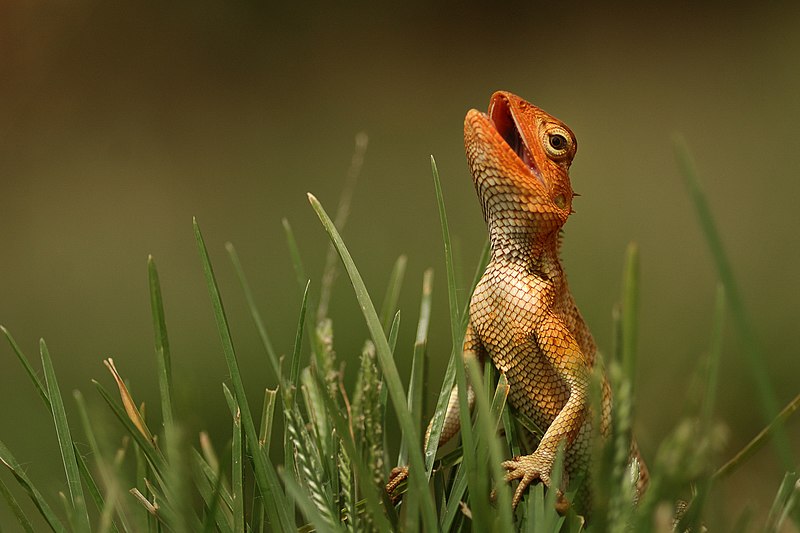News release
From:
Springer Nature
Assessing the risk of reptile extinctions
Over 21% of reptile species are threatened with extinction, suggests a global assessment of more than 10,000 species published in Nature. The findings indicate that some reptiles, including many species of crocodiles and turtles, require urgent conservation efforts to prevent extinctions.
Comprehensive extinction risk assessments are available for birds, mammals and amphibians, but have been lacking for reptiles. Conservation strategies for reptiles have so far relied on International Union for Conservation of Nature (IUCN) Red List criteria and distributions of other animals to inform policy and priorities.
Bruce Young and colleagues applied the IUCN Red List criteria to reptiles to examine extinction risks for reptiles globally. Of the 10,196 species assessed, they found that at least 1,829 (21%) of species were threatened with extinction (categorized as being vulnerable, endangered or critically endangered). Crocodiles and turtles are among the most at-risk species, with around 57.9% and 50.0% of those assessed being under threat, respectively. The authors indicate that factors including agriculture, logging, urban development and invasive species are drivers of the threat to reptiles, although they acknowledge that the risk that climate change poses is uncertain. Although previous predictions have proposed reptiles to be most at risk in arid environments (where they are highly diverse), Young and colleagues found that species inhabiting forests were more threatened — perhaps because of greater exposures to certain threats in forest environments.
The authors highlight that many of the risks that reptiles face are similar to those faced by other animal groups, and suggest that conservation efforts to protect these groups — including habitat restoration and controlling invasive species — may have also benefited reptiles. However, they caution that some reptiles do require urgent conservation efforts to prevent extinctions.
Attachments
Note: Not all attachments are visible to the general public.
Research URLs will go live after the embargo ends.

Research
Springer Nature, Web page
The URL will go live after the embargo ends
Journal/
conference:
Nature
Organisation/s:
Monash University, The University of Adelaide, The University of Sydney, Australian Museum, University of Tasmania, Charles Darwin University, University of Western Australia, NatureServe, USA
Funder:
Funding was provided by Agencia Nacional de Promoción
Científica y Tecnológica-Fondo para la Investigación Científica y Tecnológica RC 2014-0116
(L.J.A.); the Australian Department of Agriculture, Water and the Environment; the Australian
Research Council; B. and G. Moore; Charles Darwin University; Conselho Nacional de
Desenvolvimento Científico e Tecnológico; Coordenação de Aperfeiçoamento de Pessoal de
Nível Superior; the Environment Agency Abu Dhabi; Environment and Protected Areas
Authority of Sharjah; Fundação de Amparo à Pesquisa do Estado de São Paulo grants
2015/20215-7 (C.d.C.N.) and 2020/12658-4 (M.M.); Fundação de Apoio à Pesquisa do Distrito
Federal; Global Protected Area Friendly System; IBAT—The Integrated Biodiversity Assessment
Tool; Instituto Chico Mendes de Conservação da Biodiversidade; IUCN; Ministério do Meio
Ambiente; the Mohamed bin Zayed Species Conservation Fund; Monash University; Museum
für Naturkunde; National Science Foundation grants 1136586 (B.E.Y. and T.M.B.), 1455761
(S.B.H.) and 1932765 (S.B.H.); the Rainforest Trust; the Regina Bauer Frankenberg Foundation;
the Rufford Foundation; San Diego Zoo Wildlife Alliance; Secretaría de Educación Superior,
Ciencia, Tecnología e Innovación; the Society of Entrepreneurs and Ecology Foundation; the
South African National Biodiversity Institute; Species Survival Commission; Toyota Motor
Corporation through the IUCN-Toyota Red List Partnership; US Fish and Wildlife Service;
Universidad del Bío-Bío; Universidad San Francisco de Quito; University of Western Australia;
Wildlife Reserves Singapore; World Wildlife Fund; Zoological Institute, St Petersburg theme
122031100282-2; and Zoological Society of London.



 Australia; New Zealand; NSW; VIC; SA; WA; TAS; NT
Australia; New Zealand; NSW; VIC; SA; WA; TAS; NT



